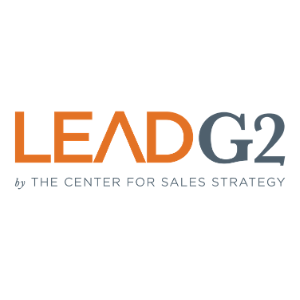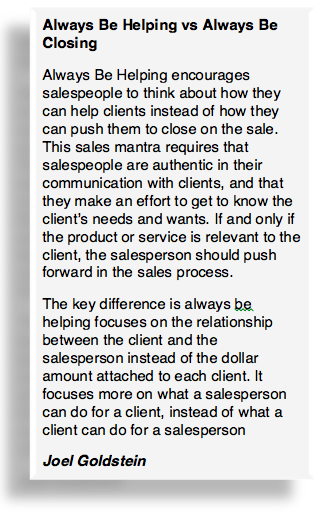1 min read
Why You Need Content to Boost Your Sales
According to recent studies by HubSpot and others, 57% of sales and marketing professionals agree that high-quality content has a positive impact on...
5 min read
 LeadG2
:
February 8, 2017
LeadG2
:
February 8, 2017


Have you ever seen that great David Mamet movie Glengarry Glen Ross with that chilling scene where Alec Baldwin harangues a pathetic group of real estate salesmen to “always be closing?”
That scene captured the essence of sales approach wisdom at that time, and Janice (who is a world class sales talent) remembers going into sales meetings where “always be closing” was the driver of training, sales incentives and contests, corporate communications, and sales reporting. In my role as a marketer in days of yore, I remember being tasked with supporting the sales team with lead generation programs and sales collateral that was 100% focused on the bottom of the sales funnel.
But as buyers became more social and as product-service-performance-reputation-opinion information became easy to find and access, “always be closing” as a sales approach was knocked off its lofty perch.
It’s not about closing a prospect anymore as much as it’s about helping the prospect “self-close” by accommodating and helping them through the buying process.
 An abundance of data strongly suggests, as Dan Tyre observes, that “the balance of power has been tipped away from the sales rep and toward the buyer (who is) far savvier than they used to be.” In fact, any number of research studies show that 50-90% of the buyer’s journey is complete before a buyer reaches out to sales.
An abundance of data strongly suggests, as Dan Tyre observes, that “the balance of power has been tipped away from the sales rep and toward the buyer (who is) far savvier than they used to be.” In fact, any number of research studies show that 50-90% of the buyer’s journey is complete before a buyer reaches out to sales.
Here’s what we wrote a few years ago in a post called Uh Oh. Your Firm’s Prospects Are Now in Charge of Marketing: “Prospects don’t want to be “sold,” they want to be helped.” For your sales team and the support they get (or don’t get) from marketing, it’s no longer a matter of “always be closing.” Moving the revenue needle is now about “always be helping” and then closing the sale. Joel Goldstein summarized this thinking very succinctly in a recent post he published called Always Be Closing vs. Always Be Helping, which we’ve excerpted at right.
Also, consider these findings from a recent DemandGen Report:
The shift in the balance of power has serious consequences for structure and mission of sales and marketing departments along quite a number of dimensions, including content.
When looking at guidance about tying content to the sales funnel, everything we read is about using an appropriate content “device” at a particular funnel stage, like doing blogging at the awareness stage or a video for the consideration phase. In our opinion, too much time and energy has been devoted to aligning type of content device to the stages of sales funnel rather than strategizing how to create helpful content.
So we put together a list of ideas for writing and publishing “helpful content” that will help your prospects though the sales funnel and accommodate the movement toward securing a sale. This helpful content can be written by the marketing department, sales team, or even outside consultants, and many of the ideas can be executed through devices ranging from blogs to webinars to videos and more.
Here are ideas for content:
All of the items on the list presented above are about helping your prospects and clients rather than trying to directly and immediately close a sale. Also, notice that the list avoids advertorial content masked as being helpful, like “10 Characteristics of the Perfect Staffing Firm for Your Company.”
Nobody is being fooled when you go down this path.
We counsel that before you start thinking about tactics or devices, you first think about strategy by answering two questions: (1) what are the significant issues or hot buttons our clients have, and (2) what can we say or provide to help them address those issues?
You might just find that when you’re always helping, you are in fact, always closing by giving your prospects and clients the right information at the right time in their buyer’s journey.

1 min read
According to recent studies by HubSpot and others, 57% of sales and marketing professionals agree that high-quality content has a positive impact on...

One of the more complex factors when marketing a staffing agency is that your potential “buyer” is both employer and candidate facing. Both audiences...

Leads you generate through market that have not yet requested to talk to a salesperson (or some other bottom-of-the-funnel action) are still...